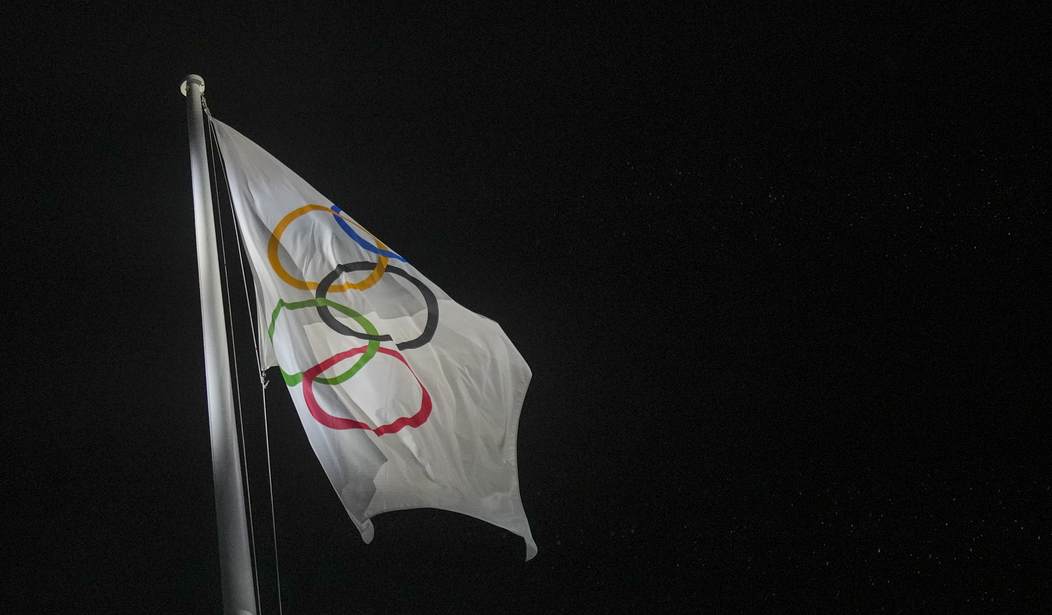So Christians "mistook" the drag tableau at a table to be a mockery of Da Vinci's "The Last Supper." How could they possibly think that? These are French left-wingers who designed the show. They would never DREAM of mocking Christianity. "You’ll never find in me any kind of wish to mock, to denigrate anything at all. I wanted a ceremony that repairs and reconciles," said the artistic director, Thomas Jolly.
At a Saturday press conference, he said his choices were not meant “to be subversive, mock or shock.” He did not mention what the Olympic tableau was supposed to be based on.
That is, until Monday. Suddenly, we learn that it wasn't based on "The Last Supper" at all. Silly us. It was based on "The Feast of the Gods," painted by the artist Jan van Bijlert between 1635 and 1640.
Ce tableau vous rappelle quelque chose ? 😉
— Musée Magnin (@MagninMusee) July 28, 2024
Et si vous veniez l’admirer au #MuséenationalMagnin à Dijon ?@jeuxolympiques @paris2024@Thomajolly @DaphneBurki #Paris2024 #ceremoniedouverture #Jeuxolympiques pic.twitter.com/iUteobd2eb
Do right-wing Christians know who Master van Bijert is? He's an almost famous Dutch painter, and "The Feast of the Gods" is one of his most important works.
They were surprised you didn't immediately recognize the work right off the bat.
Jolly denied the scene, titled “Festivity,” was based on the Da Vinci painting. “That wasn’t my inspiration,” he told BFM TV. “I think it was pretty clear. There’s Dionysus who arrives at the table … Why is he there? Because he’s the god of feasting, of wine, and the father of Sequana, the goddess of the River Seine.”
Can't you see it? Jeez, you guys must be blinded by faith or something.
Actually, if you watch this short video of the tableau, you will see some of the actors intentionally trying to mimic the Da Vinci apostles.
🇫🇷 Le signe d'égorgement d’un enfant lors de la cérémonie d'ouverture des Jeux Olympiques de Paris, ainsi que la parodie de La Cène de Léonard de Vinci, qui comprenait des drag queens, des mannequins transgenres, des personnes LGBT, et un chanteur presque nu et peint en bleu, ont… pic.twitter.com/bYNEmtsXTA
— Wolf 🐺 (@PsyGuy007) July 29, 2024
A mockery of The Last Supper at the #OlympicGames
— Alec Lace (@AlecLace) July 26, 2024
If they mocked Muhammad like this, Paris wouldn’t be on the map tomorrow.
The Catholic Church must respond now and denounce this! pic.twitter.com/biZsrSkQNs
In all seriousness, van Bijert was a Dutch Golden Age painter who, along with Rembrandt and Johannes Vermeer, defined an era of realism in art. Just as an aside, "The Feast of the Gods" was, itself, a representation of "The Last Supper."
According to the Magnin Museum, "From the painters of Utrecht, steeped in Caravaggism, the Magnins chose Van Bijlert, whose Feast of the Gods disturbingly blends the iconography of myths with that of the Last Supper."
The Magnin Museum did, however, acknowledge similarities between the work and The Last Supper, which was painted more than a century earlier before the Protestant Reformation, which rejected Catholic art and even destroyed many works.
That may go some way to explaining the confusion. “In the context of the Reformation … the artist found a strategy for painting a Christ-related Last Supper under cover of a mythological subject matter,” the museum said.
They are pretending that there was no offense given because we're all too stupid to recognize an obscure work of art as the real inspiration for the Olympics.
Related: Israel Says Hezbollah Will 'Pay a Price' for Strike on Soccer Field That Killed 12 Children
Even if the statements by Jolly and the Olympic Committee are true, isn't this what the left does to the right all the time? Context doesn't matter. Meaning and definitions are frangible. It looks like "The Last Supper," so it couldn't be anything else.
The people responsible for that scene during the opening ceremonies aren't stupid. I don't believe for a second they didn't see that tens of millions of people around the world would find the tableau objectionable.
It's OK, though. They're only Christians.










Join the conversation as a VIP Member